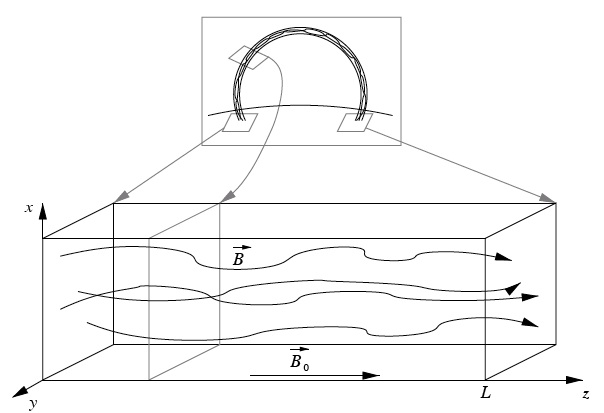
Buchlin, E., V. Aletti, S. Galtier, M. Velli, G. Einaudi, and J. C. Vial, A simplified numerical model of coronal energy dissipation based on reduced MHD, A&A, 406, 1061-1070 (2003) (ADS)

(click on the image for a larger version)
Date: 2008 December 26
Update: 2019 November 19
An illustration of how nanoflares might work in a model that tries to take SOC (self-organized criticality) to a more physical level via a calculation in the reduced MHD approximation. Note the lumps on the loop - "nanoflares" should have a spatial as well as a temporal intermittency. This seems to be a weak point of this kind of theory, because there are apparently no published descriptions of such lumps. That would be OK if the heating were non-local, but then what would be the merit of "reduced MHD"? You will have to give this paper a read to find out what if anything the authors have to say about this, but the Archivist has the opinion that full MHD is already too reduced for a theory of this phenomenon. It can't deal with non-local (kinetic, rather than fluid) processes.